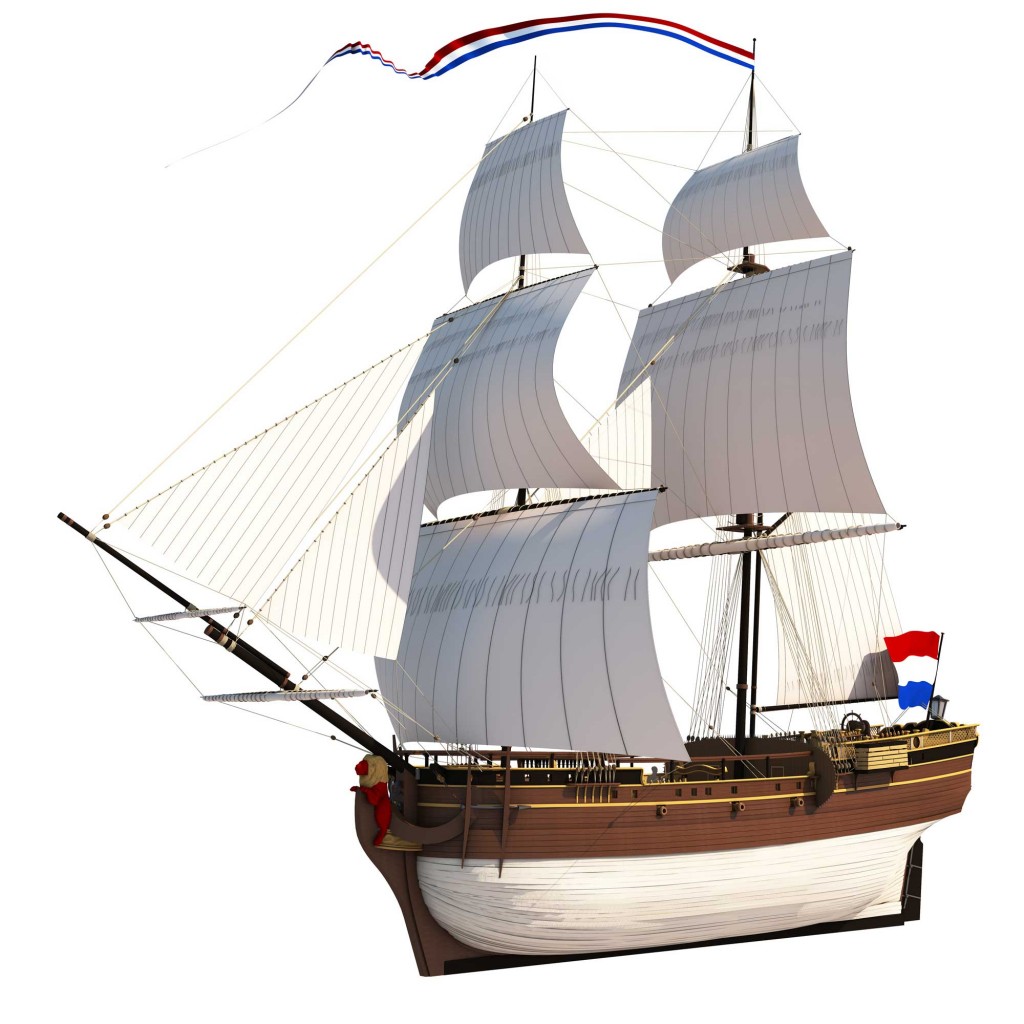The captain of the Unity had been given enough trade goods to buy 300 human beings. These enslaved people were all put on board the 23 meter (75.459 feet) long ship. This happened as follows. The men were separated from the women and children. The men were locked up on the ‘tween deck underneath the waist deck during the evenings and nights. The women and children were kept on the ‘tween deck in the stern, called the ‘aft ‘tween decks’ in the logbook. During the day they were allowed onto the deck; the men on the waist deck and women on the stern.
The ship underwent several adjustments for the transport and accommodation of the prisoners. The carpenters started this work several weeks before reaching the destination in Africa.
Partition
First of all, a partition was placed mid-ships, right behind the mast. It therefore prevented the passage of the captives from the waist deck (lowest outside deck) to the aft deck, serving chiefly to protect the crew. The door in the partition was guarded by a sailor who was armed with a cutlass. The logbook of the voyage does not indicate when the partition was built, but does mention when it was broken down: after selling the last enslaved person in the West Indies. Possibly the partition was already present at departure.
The potential reality of a mutiny is apparent from the logbook of the next, the 4th voyage of the Unity: the enslaved men “first of all, took away the cutlass from the man who was standing by the door of the partition, without us noticing. They then stormed the door and attacked us, at which we, who were standing below the tent on the half deck, as well as the captain, first mate and third mate, immediately went to the gun chest behind the captain’s cabin”.
Tent
On Wednesday the 18th of November the carpenters began making the wooden tent, a kind of shelter situation on the aft deck. Zeeland ship’s surgeon D.H. Gallandat also mentions this tent in his “Necessary Instructions…”, and explains that the tent was located above the quarterdeck (the women’s quarters), which could be reached through a hatchway. The roof of the tent contained a hatchway for fresh air.
Latrines
The latrines for the enslaved people were put together right after the arrival in Africa. On Thursday December 10th the first ‘female slave’ was bought, at which point the first ‘slave house’ was put up on the aft deck: the latrine for the female slaves. The second latrine for the men was put up two days later, aside the ‘tween deck.
Galley
The logbook of the first mate shows that the ‘slave galley’ was built on the 18th of December, 11 days after the arrival on the coast of Africa. It was put on the forecastle, and masoned up using the 1200 stones, 4 iron plates, lime and sand mentioned in the inventory. A copper kettle for this galley had also been stored, in which the food for the enslaved people was prepared. Provisions were brought from Middelburg, and consisted of barley, beans and old meat. It was supplemented in Africa with fresh products.
Bunks
During the voyage the captives slept between decks on bunks made by the carpenter: the men on the actual ‘tweendeck, and the women on the quarterdeck. An extra ‘layer’ of bunks was made in the ‘tween deck as soon as the number of captives increased. First on one side of the ship and later on the other side. These bunks were made of wooden planks that were custom made.




